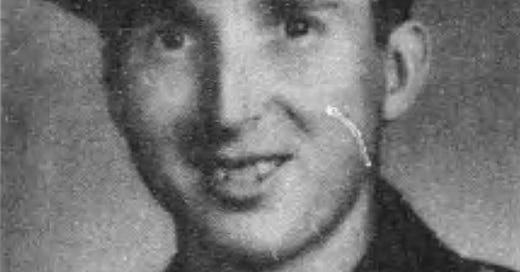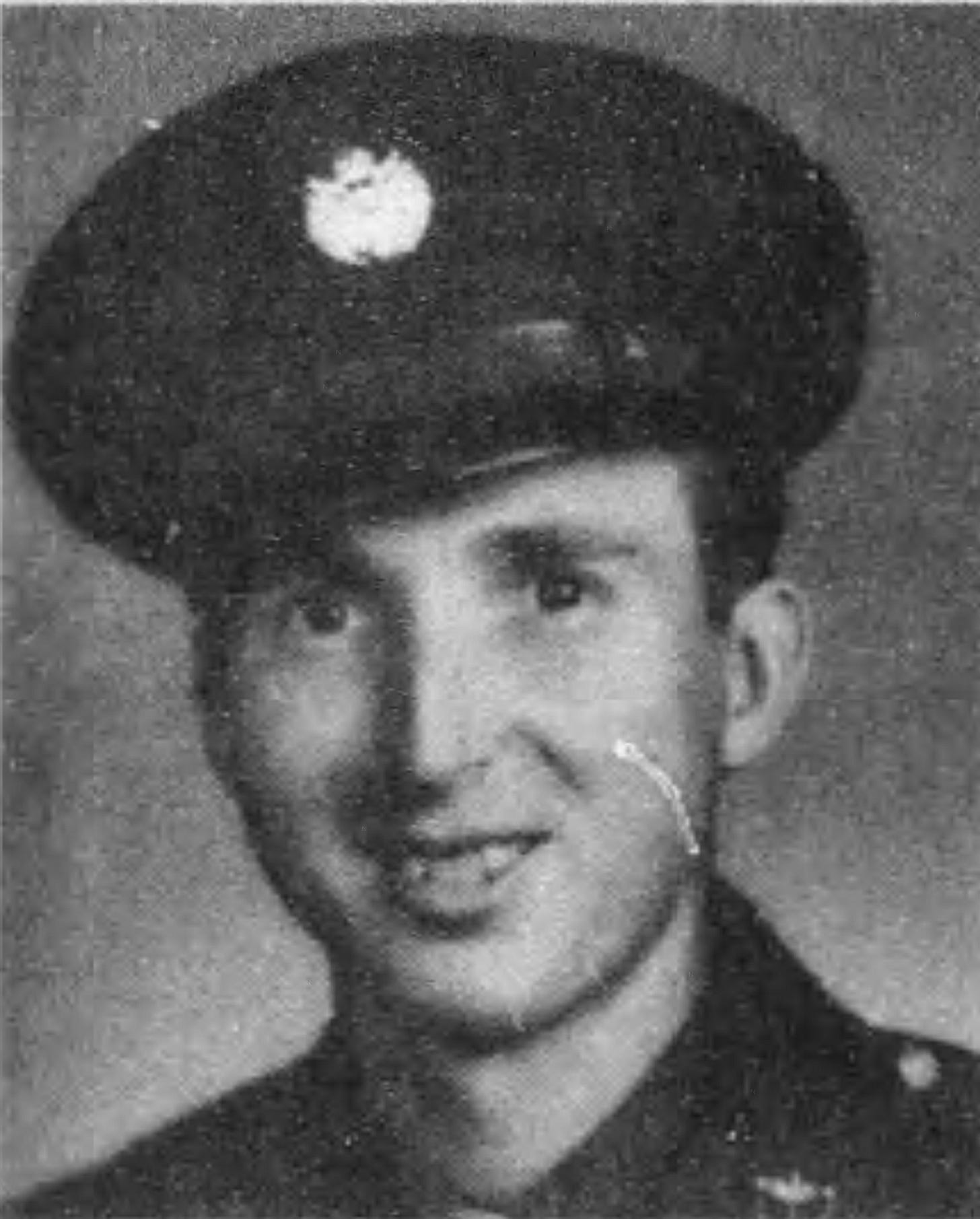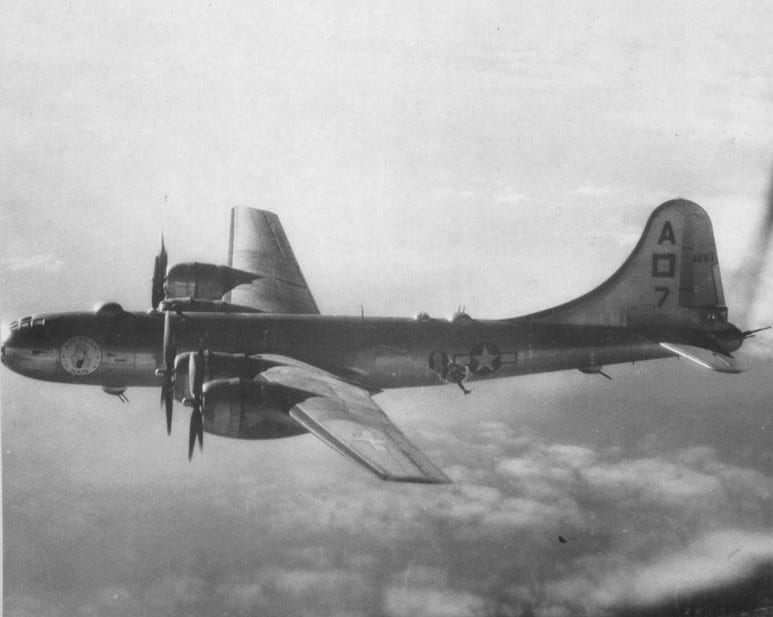On Jan. 3, 1945, Sgt. James R. Krantz of Hickory Point, Tennessee took off from Saipan for his seventh mission as a gunner aboard the B-29 known as “American Maid.” The bomber was part of a large-scale raid on Nagoya, Japan, and heavy anti-aircraft and fighter opposition was expected.
The plane’s pilot, 1st Lt. John D. Bartlett, had begun the bomb run when enemy fire knocked out Krantz’s left-side gun blister, depressurizing the Superfortress. In an instant, Krantz flew out the open gun blister before his body jerked to stop, held in place by the jury-rigged safety strap he had fashioned after seeing a fellow gunner nearly fall victim to the same fate on the previous mission.
There Krantz dangled, 20,000 feet above Japan, oxygen mask and gloves gone, in air temperatures approaching 20 below zero, while his crewmates scrambled to yank him back inside the plane.
“I could see Krantz’ foot and part of his leg — the rest of his body was out the window,” Staff Sgt. A.R. Hart would tell reporters.
Hart and the co-pilot, 2nd Lt. F.W. Crowe, struggled against the force of the wind for several minutes.
“Lt. Crowe managed to get a grip on him and we pulled him up until we were gripping his pistol belt where it crossed the shoulder,” Hart said. “By that time the strap holding Krantz’ leg slipped and his entire body was out of the plane.”
Just in time, 2nd Lt. H.K. Wittee finished his long crawl back from the bombardier’s seat after dropping his payload and provided the last bit of muscle they needed to get Krantz back inside the plane.
About this time, a crewman in a neighboring bomber snapped a photograph of the ongoing rescue, the image clearly showing Krantz’s leg and boot outside the plane.
Even as they finished hauling him in, Crowe had an oxygen mask on the unconscious gunner’s face.
“We thought he was dead,” Hart said, “but after a couple of minutes his eyes blinked and we all cheered.”
The radio operator, Staff Sgt. R.B. Angell, gave Krantz blood plasma, and the 22-year-old gunner regained consciousness by the time they returned to base. Krantz had dislocated his shoulder, gone into shock and suffered severe frostbite that eventually would cost him the tip of the ring finger on his left hand, but he was alive.
His remarkable story, delayed by censors, eventually hit the wires on Jan. 8. When the Associated Press report clicked over the teletype at the Leaf-Chronicle in Clarksville, Tennessee, editor Stanley Gower ran for his car and drove the 20 miles to Krantz’s home in Hickory Point.
There he found Krantz’s wife, Mildred, in tears. She had heard a report on the radio and believed her husband was seriously injured or dead. Gower read her the AP story, which indicated he would make a full recovery, and “she broke into a smile, overjoyed.”
Krantz was transferred to Schofield Barracks in Hawaii, where he continued to receive treatment for his injuries. In a Jan. 28 radio interview that was printed in the Leaf-Chronicle three days later, he described how he had used material from an old parachute rig to make the extra safety strap that saved his life and recounted his memories of the incident.
“On the way out one of my legs had caught in the hole and I tried to keep it there so the other fellows could pull me back,” Krantz said. “I remained conscious for about two minutes and then began to pass out as we were several thousand feet in the air. … However, I wasn’t too worried because I knew that my strap would hold me. The last thing I remember before everything went blank was seeing the railroad yards in Nagoya below me.”
Krantz’s account ends with this: “They tell me that a lot of the men in my squad are now making the same kind of belts for themselves.”
As well they should after hearing Krantz’s story.
In late April, Krantz returned to Hickory Point on a 30-day leave, giving him the chance to spend time with his older daughter Robbie Carolyn and meet his youngest, Linda Gayle, for the first time.
He finished the war at Camp Butner, North Carolina before returning home to open a garage on Route 2 in Clarksville. He eventually settled into a career as a plumber, and his remarkable story of survival would make the news periodically over the next few years.
The Krantzes would have three more children after the war, and by the time James and Mildred celebrated their 70th wedding anniversary on Jan. 25, 2012, their brood had grown to include 12 grandchildren and 22 great-grandchildren.
James R. Krantz died a little over a month later at age 89, and Mildred followed in November of that year, also at 89.







Frank Crowe was my great-uncle. i literally just learned about this story the last day or so